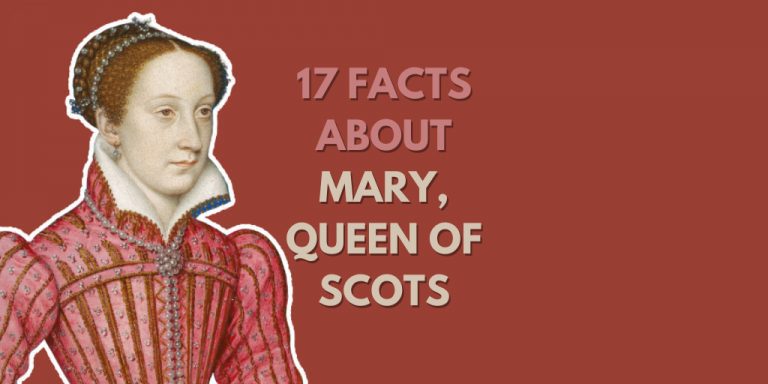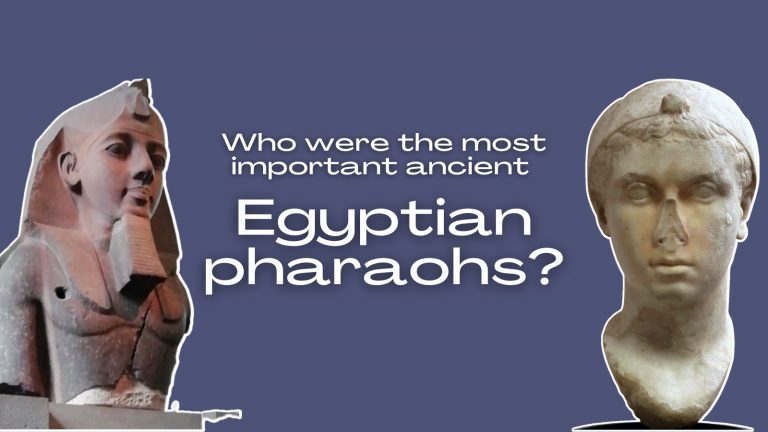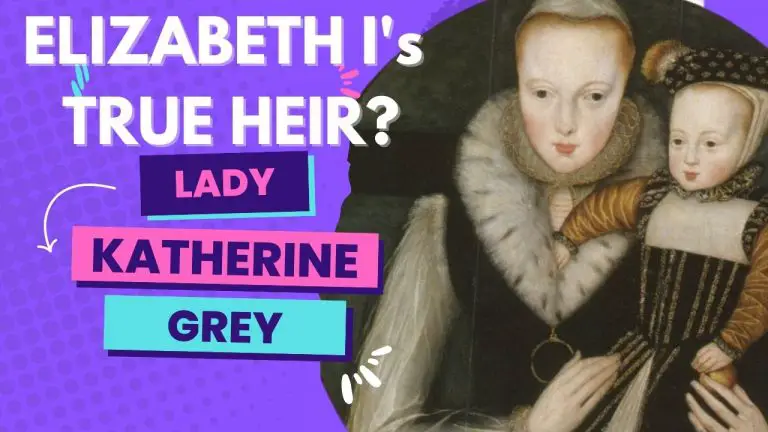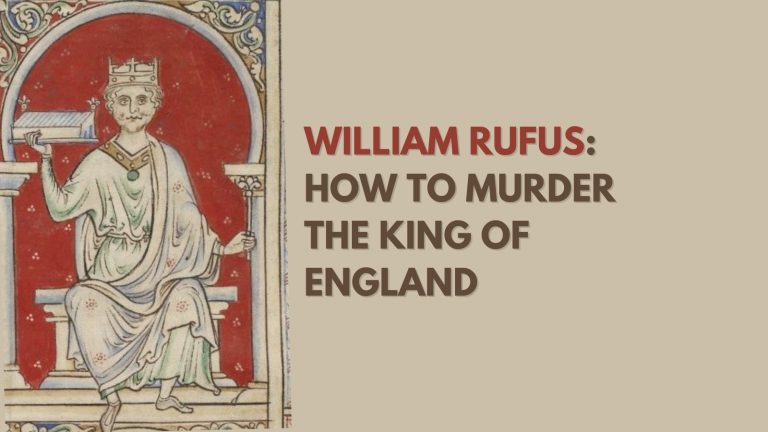What did Henry VIII look like? – Young Henry will shock you!
Unlike many monarchs in history, we know what King Henry VIII looked like. The National Portrait Gallery alone has 98 portraits of Henry VIII. Those portraits show Henry at various stages of his life.
When we consider the appearance of Henry VIII, we have to consider the period of his life.
The young Henry VIII who came to the throne looked very different from the one who died 36 years later. He had gone through many changes during that time. It is safe to say that the aging process did not go well for Henry.
There are common aspects. The most obvious element that comes to mind when you look at almost any portrait of Henry VIII is the nearly square nature of the face.
So, what did Henry VIII look like?
What did the Young King Henry VIII look like?
The young King Henry VIII succeeded his father, Henry VII, in 1509 when he was just 17 years of age.
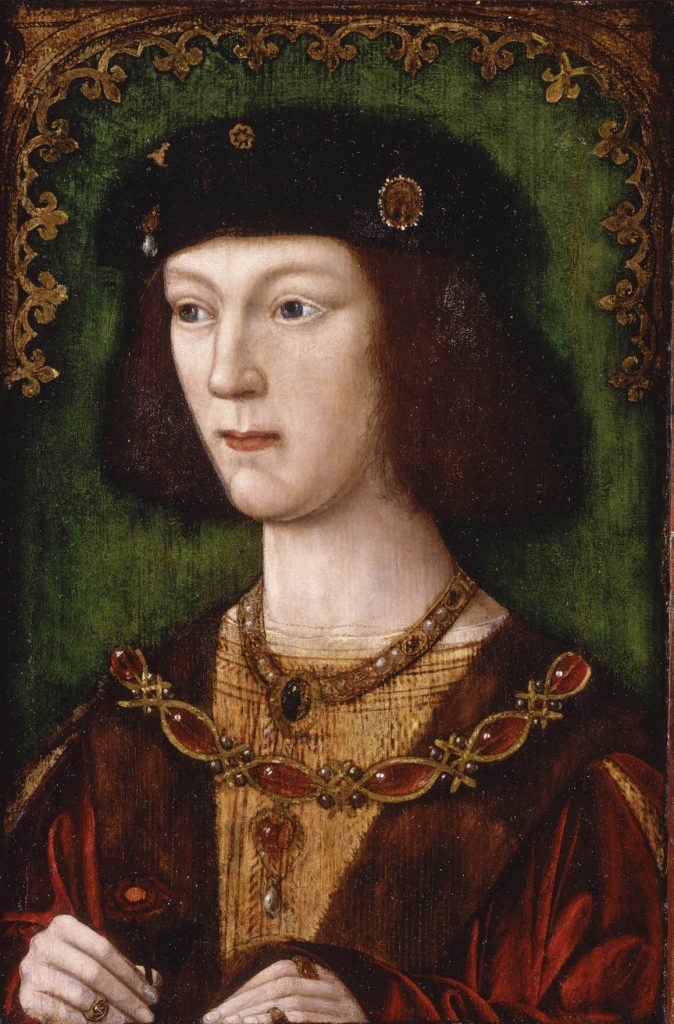
This portrait of Henry VIII that now hangs in the Denver Art Museum was completed in 1509 by Meynnart Wewyck. Hans Holbein the Younger gets all the plaudits as the most famous painter of Henry VIII. Still, Wewyck was the first-ever official painter appointed by a monarch, Henry VII. Wewyck painted this stunning image of Henry VIII and most of the early Tudor Dynasty as well; Henry VII, Lady Margaret Beaufort, Prince Arthur and Elizabeth of York.
The Meynnart Wewyck portrait is fascinating because it is possibly the only one where someone might struggle to identify the sitter.
Henry is probably depicted as a teenager before he came to the throne. Despite being dated circa 1509, the portrait is said to be “Prince Henry.” It is clear that Henry sat for the portrait before Henry VII’s death and would likely have been around fifteen years of age.
He was widely regarded as the most handsome prince in Europe. He was tall for the period, standing at almost six foot two inches.
His height was always his most remarkable feature. When acting in some of the court mummings, Henry would regularly disguise himself. Unfortunately, no matter how elaborate the costume, everyone could always tell it was the King simply because of his height. When he took off his mask at the end of the performance, everyone present would have to pretend to be surprised that it was him.
The young King was muscular and athletic. He played a wide range of sports and was a formidable jouster in the lists.
He had a handsome face and a thick head of red hair. He didn’t grow his beard for some time. When he did so, it is said that Catherine of Aragon wasn’t too pleased about it and objected.
Henry VIII looked every inch a king.
As well as portraits of Henry VIII, we have many contemporary accounts of Henry VIII’s appearance.
Lord Mountjoy said about him, “Our King stands head and shoulders above other men.”
Hall’s Chronicle states this about him on his coronation day. “The features of his body, his goodly personage, his amiable visage, princely countenance, with the noble qualities of his royal estate, to every man known, needs no rehearsal, considering that for lack of cunning, I cannot express the gifts of grace and of nature that God has endowed with him.”
The Venetian Ambassador wrote regular reports on Henry’s appearance to be sent back home.
After dinner, we were taken to the King, who embraced us, without ceremony, and conversed for a very long while very familiarly, on various, in good Latin and in French, which he speaks very well indeed, and he then dismissed us, and we were brought back here to London….
His Majesty is the handsomest potentate I ever set eyes on; above the usual height, with an extremely fine calf to his leg, his complexion very fair and bright, with auburn hair combed straight and short, in the French fashion, his throat being rather long and thick. He was born on the 28th of June, 1491, so he will enter his twenty-fifth year the month after next. He speaks French, English, and Latin, and a little Italian, plays well on the lute and harpsichord, sings from book at sight, draws the bow with greater strength than any man in England, and jousts marvelously. Believe me, he is in every respect a most accomplished Prince; and I, who have now seen all the sovereigns in Christendom, and last of all these two of France and England in such great state, might well rest content.
In a separate report, he wrote:
“His Majesty came into our arbor, and addressing me in French, said: ‘Talk with me awhile! The King of France, is he as tall as I am?’ I told him there was but little difference. He continued, ‘Is he as stout?’ I said he was not; and he then inquired, ‘What sort of legs has he?’ I replied ‘Spare.’ Whereupon he opened the front of his doublet, and placing his hand on his thigh, said ‘Look here! and I have also a good calf to my leg.’ He then told me that he was very fond of this King of France, and that for the sake of seeing him, he went over there in person, and that on more than three occasions he was very near him with his army, but that he never would allow himself to be seen, and always retreated, which his Majesty attributed to deference for King Louis, who did not choose an engagement to take place; and he here commenced discussing in detail all the events of that war, and then took his departure….
After dinner, his Majesty and many others armed themselves cap-a-pie, and he chose us to see him joust, running upwards of thirty courses, in one of which he capsized his opponent (who is the finest jouster in the whole kingdom), horse and all. He then took off his helmet, and came under the windows where we were, and talked and laughed with us to our very great honor, and to the surprise of all beholders.”
How Henry VIII dressed
Whereas his father, Henry VII, tended to dress in rather plain clothes, Henry VIII went for the extravagant. His father left him a full treasury of money, and Henry was determined to spend it.
Clothes and jewels seemed like a good investment. Henry knew he was the King, and he was going to dress like one.
He wore a gold jacket covered with diamonds, rubies, emeralds, and pearls for his coronation. Over this wore a robe of crimson velvet trimmed with ermine. Finally, there was the piece de resistance, a huge collar of ballas rubies from Afghanistan.
Henry was never afraid of flashing his jewellery, and he kept many goldsmiths in a good income for many years.
He tended to favour red, black, and gold in his outfits.
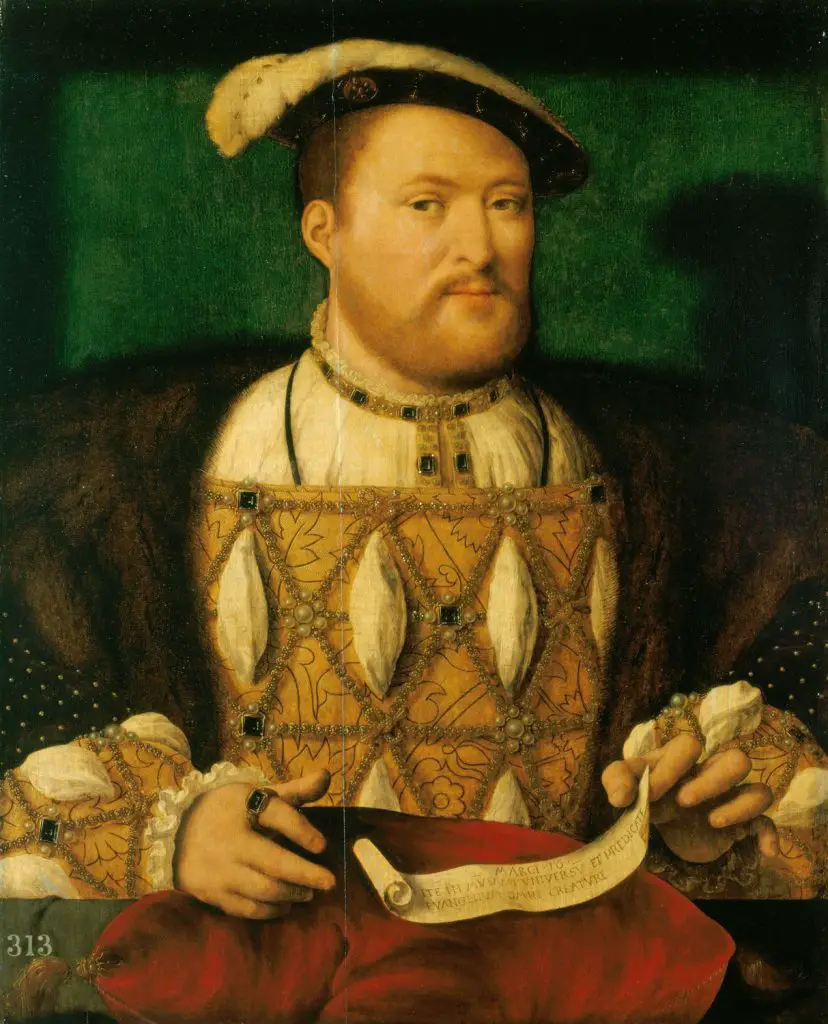
The field of the cloth of gold summit with the King of France was a perfect opportunity for King Henry VIII to “show off.”
“The first day saw Henry in a gown of thickly pleated cloth of silver ribbed with gold and a doublet of rose velvet. His cap was black velvet encircled with rubies, emeralds, and pearls with a white plume. His horse had tissue of cloth of gold over russet velvet, with the gold cut into waves edged with gold to signify the English lordship of the sea.”
His clothing was made to highlight his figure. His tight white stockings highlighted the shapely calf that the Venetian Ambassador wrote about. The shoulders were often padded to make it appear like Henry had a much bigger chest than the reality.
What did the middle age Henry VIII look like?
We have the King Henry VIII that everyone remembers… the Henry from the Hans Holbein Portrait.
The original mural was painted on the walls of Whitehall Palace and was lost to fire in 1698.
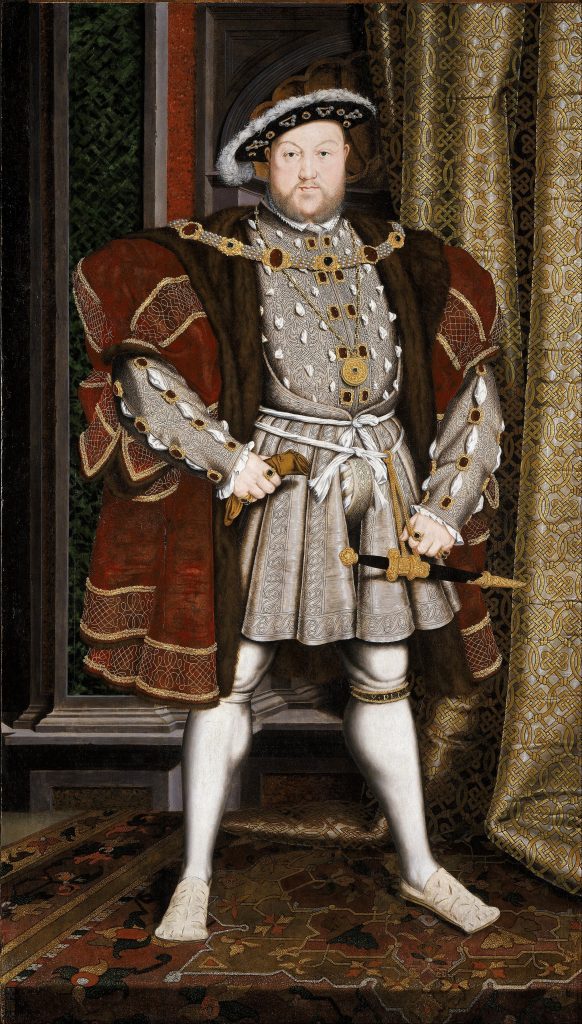
However, that one image of Henry has been replicated by numerous painters throughout the years. It has become the standard image of Henry VIII.
It is King Henry VIII in his prime.
Holbein created the original work in 1547 when he was married to Jane Seymour. Henry had just suffered his final jousting accident the year before. Jane Seymour was soon to die after giving birth to Prince Edward. Henry VIII was now on the road to physical (and mental) decline.
Holbein probably flattered the King a little, probably by depicting him as he perhaps would have appeared maybe a few years earlier when Henry married Anne Boleyn. But again, those familiar features that contemporary sources have already mentioned are all too evident.
His body is further thickened after years of jousting and playing sport. There is a hint that middle-aged spread has started to creep in.
Henry has what we might call a “Dad bod.”
Henry’s stance tells you everything that you need to know. He oozes masculinity. The massive padded shoulders and that famous uncompromising stare. He stands legs akimbo and in the centre, a vast, thrusting codpiece.
At the time of the portrait, King Henry VIII had no heir. Jane Seymour was still to give birth to the future Edward VI. With this image, Henry wanted to project a particular image.
Hans Holbein’s painting tells us that Henry wanted to be depicted as a man full of life, energy, and vitality.
Hans Holbein The Younger’s Whitehall Mural.
The Whitehall Mural was commissioned by Henry VIII for his palace at Whitehall. Hans Holbein The Younger created the iconic image of Henry VIII that we all know for this project.
The mural was life-size and designed as a piece of propaganda.
It shows, not only Henry VIII but his Queen Jane Seymour. Behind them stand the King’s father, Henry VII and his mother, Elizabeth of York.
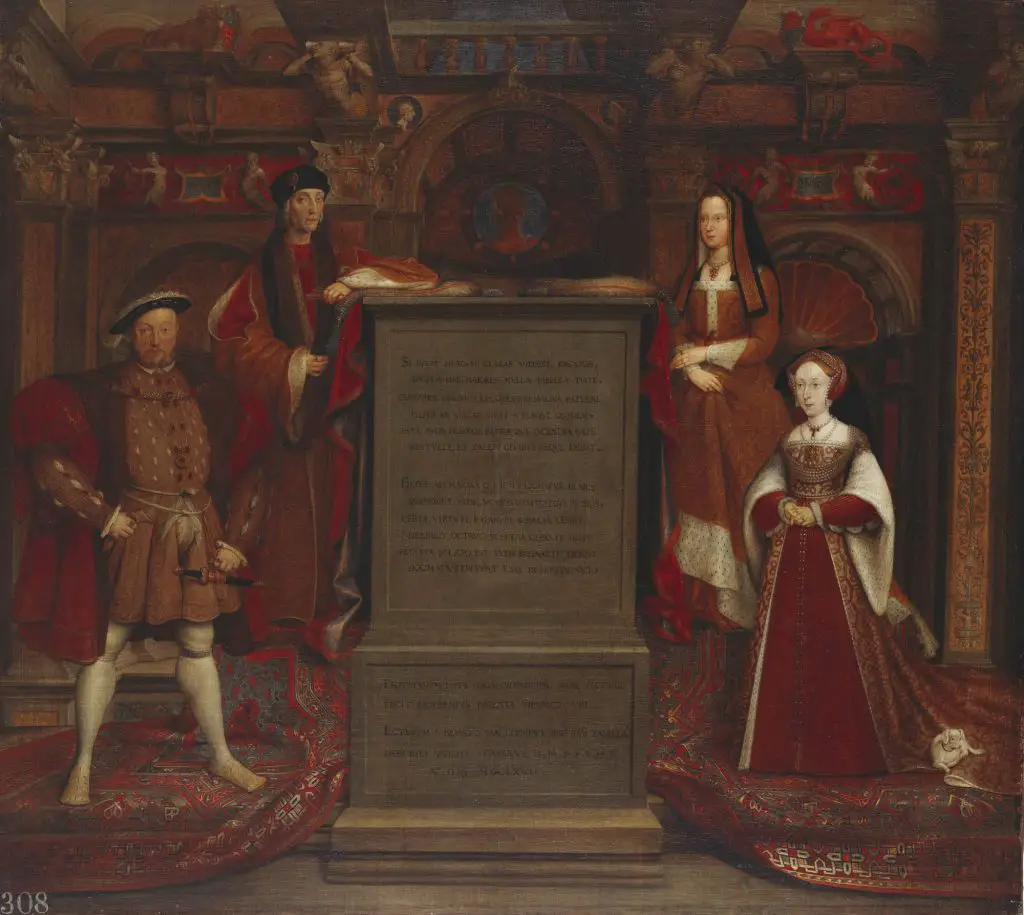
It highlights the Tudor Dynasty.
Henry VIII stares squarely out of the painting. This was highly unusual for the day.
The Whitehall mural by Hans Holbein then spawned version after version after version. It created the image of Henry VIII that we all remember.
Unfortaunlly the Whitehall mural was destroyed by fire in 1698.
A watercolour copy by George Vertue remains in the Royal Collection Trust. However, this was made some two hundred years after Hans Holbein the Younger painted the original. Strangely, he opted not to include the famous Codpiece in his version.
In addition to this copy, one of Hans Holbein’s sketches of Henry that he used to create the Whitehall mural is now in the National Portrait Gallery.
What did the old Henry VIII look like?
Then we have the Henry VIII of the later years after his physical decline had taken place. He managed a royal progress with his new bride, Catherine Howard in 1541. Reports say that by this stage he was hugely obese.
His jousting accident of 1536 ended all of his sporting endeavours. Unfortunately, Henry still liked to eat and drink like a young man who burnt off a considerable amount of calories each day with exercise.
He wasn’t.
He now lived a sedentary lifestyle.
That took a toll on his waistline.
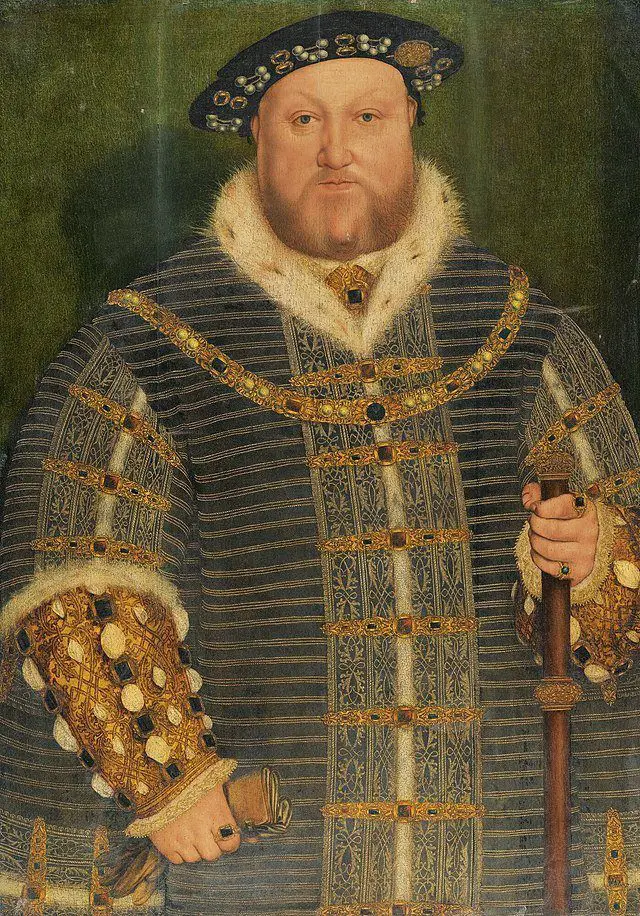
There are two famous sets of armour in the Tower of London. The first, when he came to the throne, showing a waist of 35 inches. The final suit of armour was for his campaign in France, three years before his death. It showed a waist of 52 inches.
Henry had put on a considerable amount of weight, due mainly to inactivity.
Things got so bad in the final year of his life special wheelchairs were invented to drag the King around his royal palaces because he had become too fat to walk that often.
Lifts were installed where strong men would pull on ropes to heave Henry to the upper floors.
His legs would regularly break down. There was more than one occasion when his doctors feared that he would not recover.
Henry VIII, like everybody, went through the aging process.
In his final portraits, the famous red beard is gone, replaced by a white one.
But we still remember that iconic image from Hans Holbein The Younger.
That single image makes Henry VIII the most recognisable monarch in English History.



